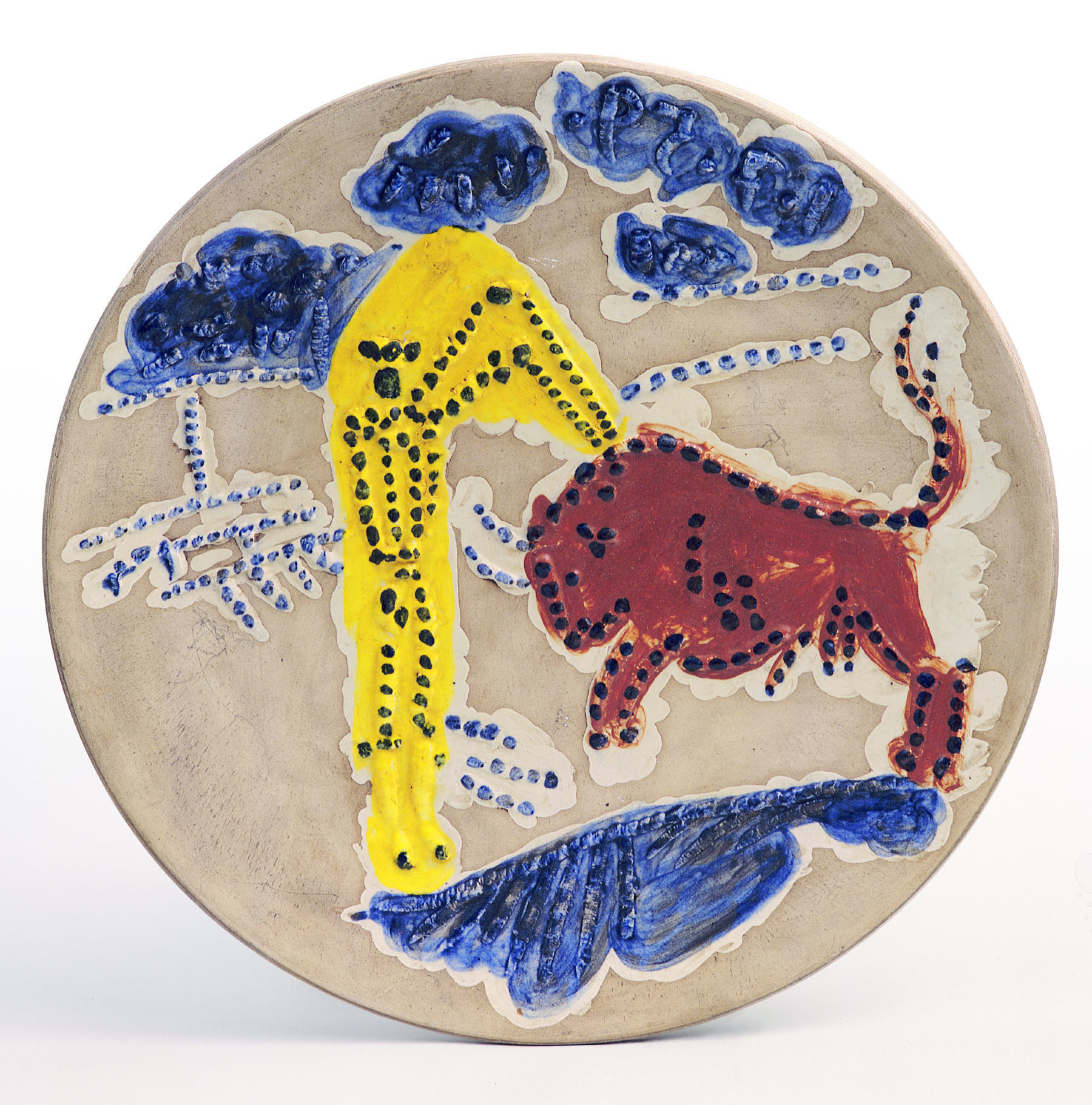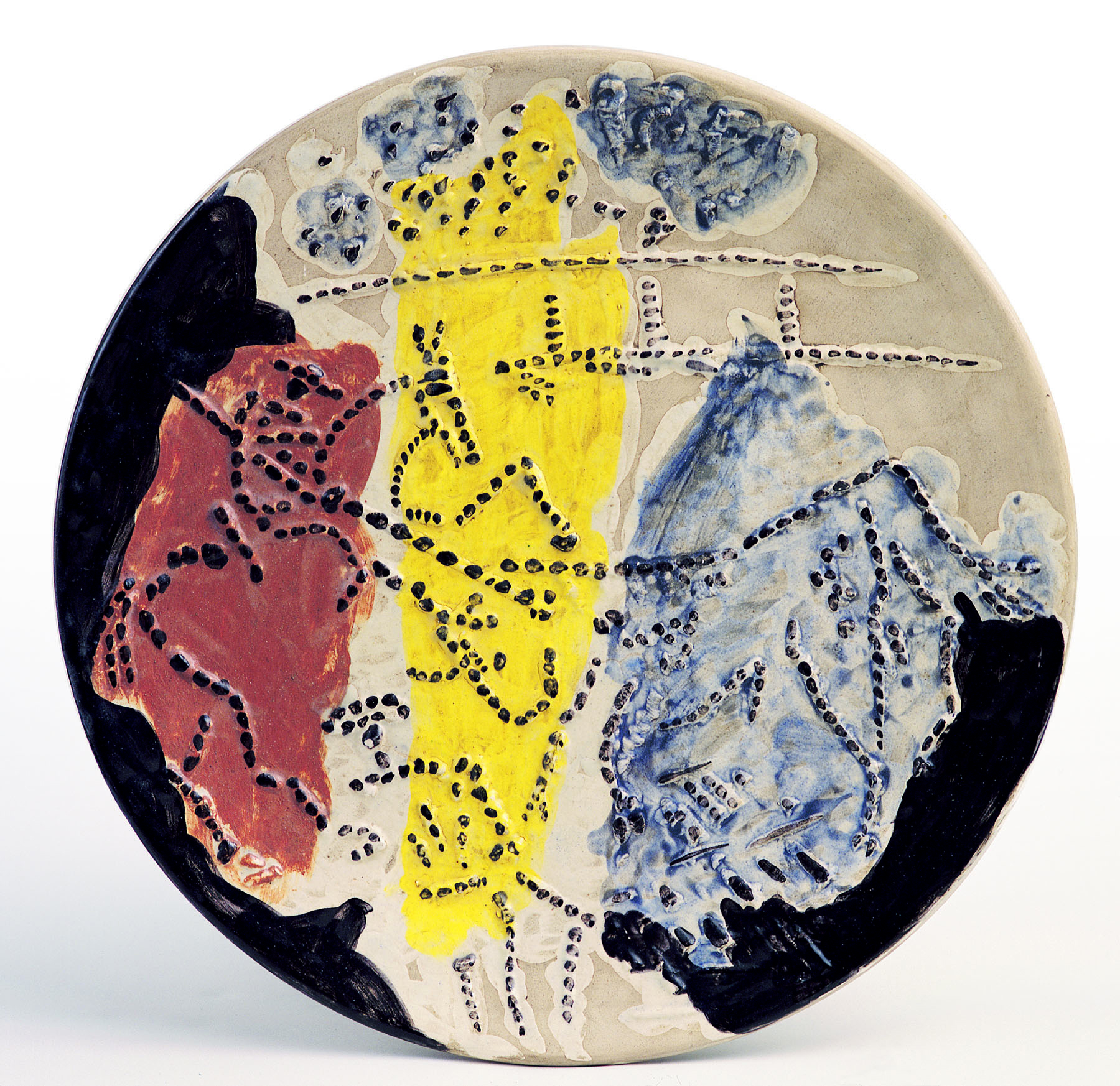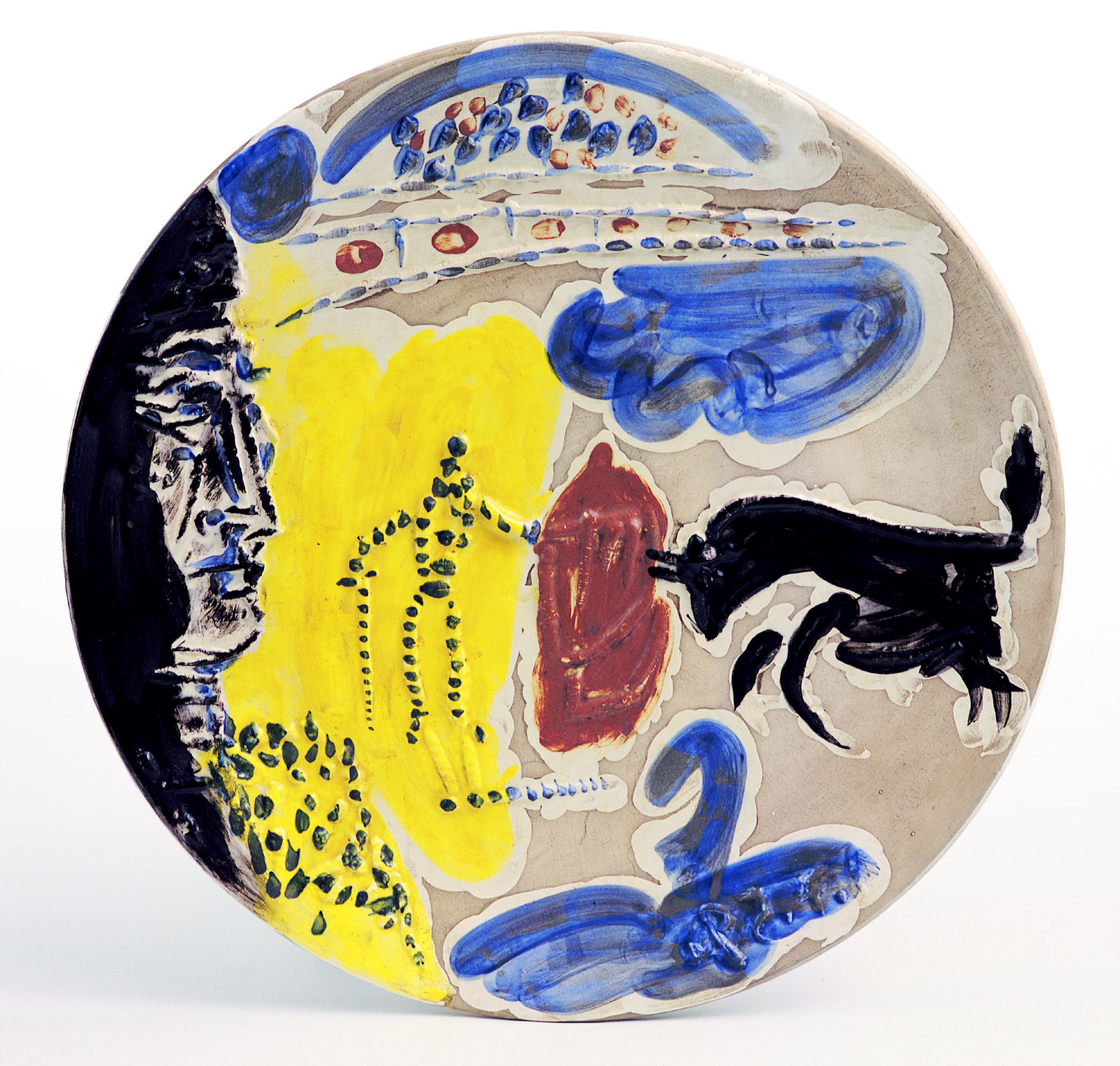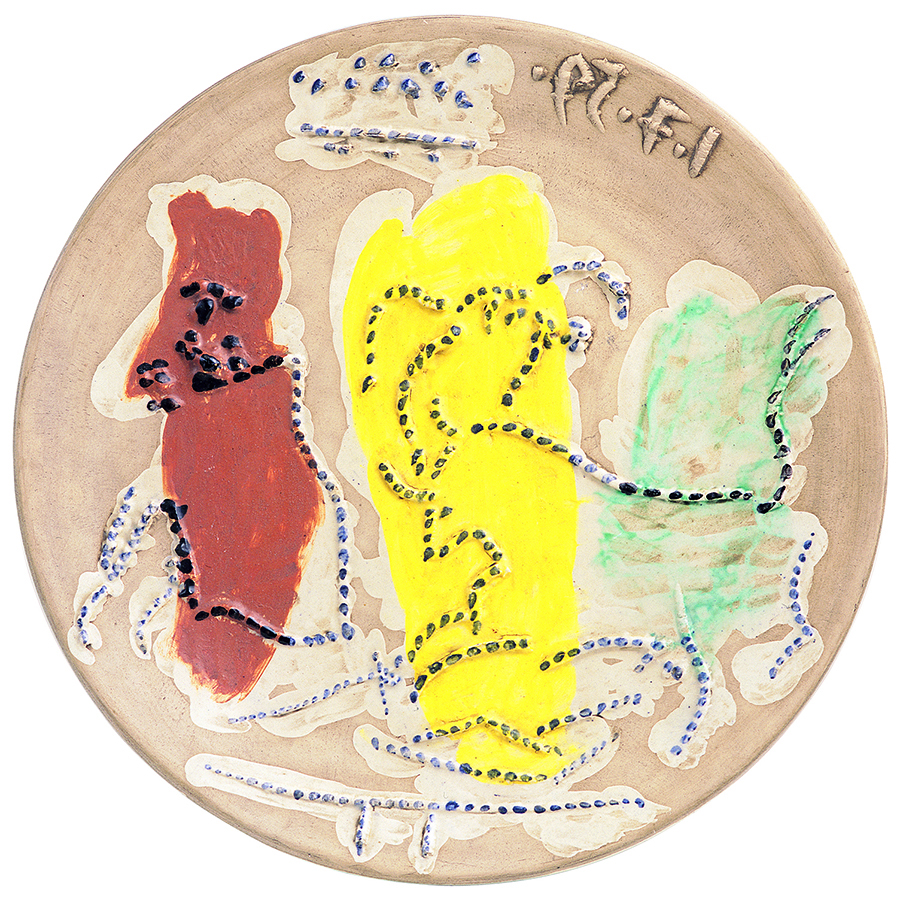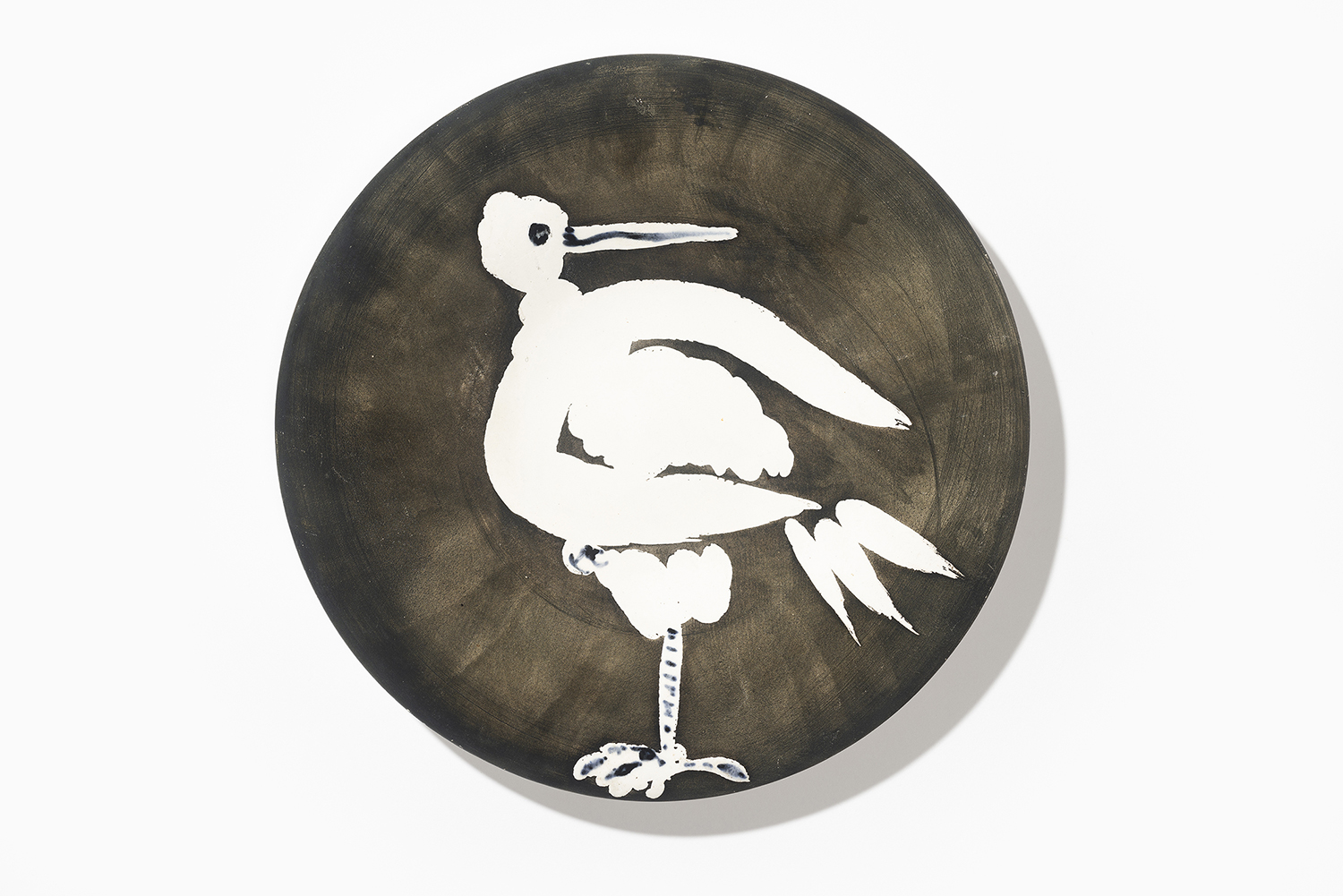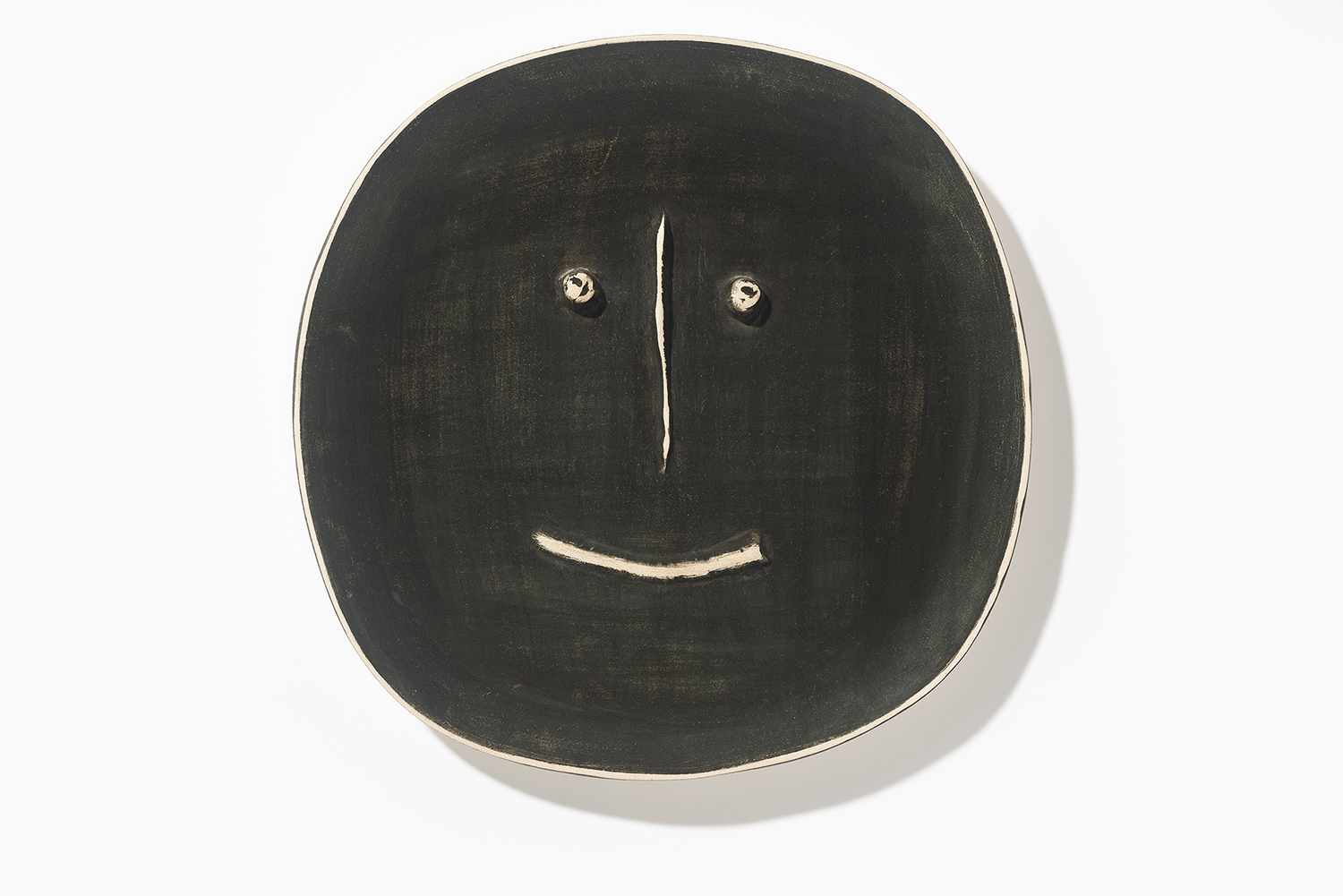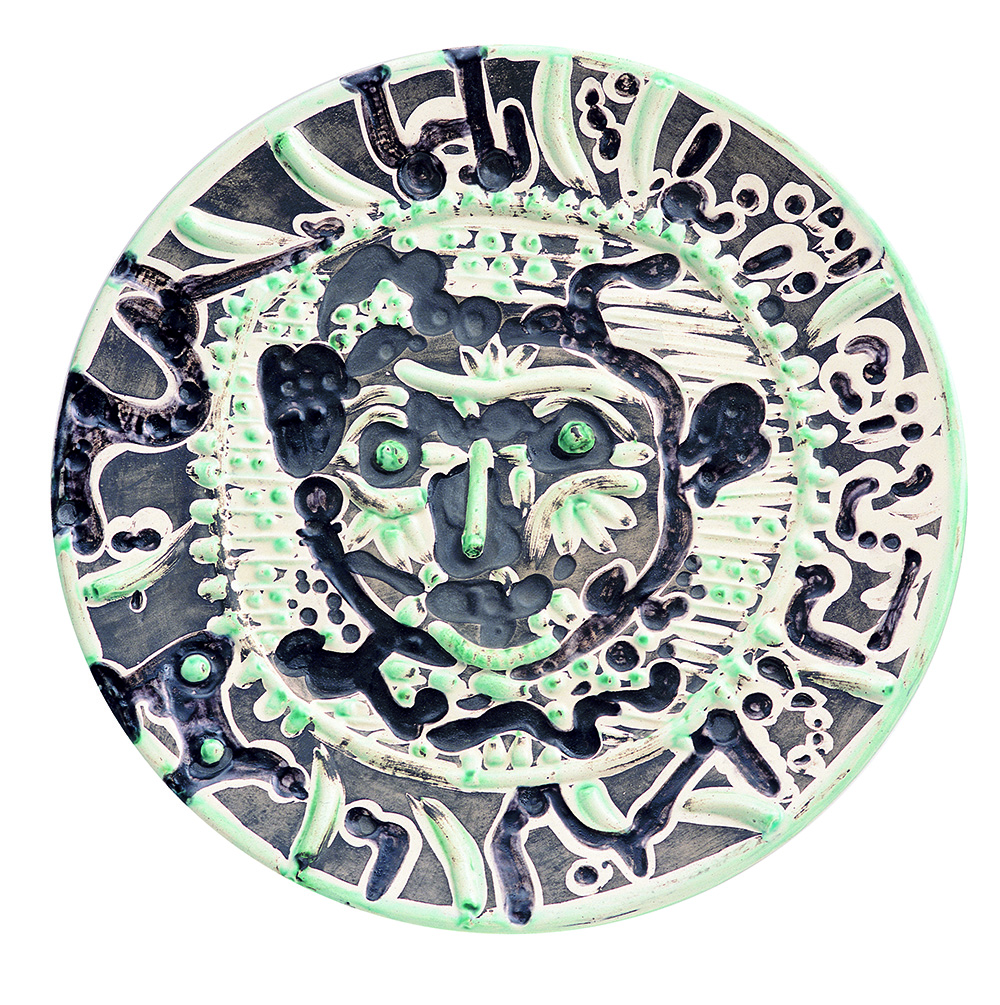This website uses cookies so that we can offer you the best possible user experience. The cookie information is stored in your browser and performs functions such as recognizing you when you return to our website or helping our team to understand which sections of the website you find most interesting and useful.

Musiciens et danseur
Date: 1957
Technique: Round dish. Red earthenware clay. Painted and glazed. Unique piece
Dimensions: 23 cm diameter
Es Baluard Museu d'Art Contemporani de Palma
Reg. no.: 483
On display
In late 1946, when Picasso visited the Madoura workshop in Vallauris, France, with Françoise Gilot, he discovered a new form of artist expression which he would subsequently work on; the reproducibility of the artwork on the basis of the artisanal tradition of fired clay. A total of 633 creations – mass-produced and also unique works – make up his extensive production completed between 1947 and 1971.
Picasso adopted the utilitarian, domestic object – plates, dishes, pitchers, jugs, bowls, tiles, etc., produced by Georges and Suzanne Ramié – either as a pictorial surface on which he developed themes linked to mythology, portrait, bullfighting, among others, or as a material he manipulated, directly moulding the medium in order to connect it to themes he was interested in.
In addition to serial production, editions with a greater or lesser number of copies according to each individual case, in parallel he made several different unique pieces, of which Musiciens et danseur, from 1957, is an outstanding example. The red clay, in this case moulded in the shape of a round plate, expresses a dance scene structured on the basis of the synthesis of primitive shapes, referring us to the piece of clay as one of the first elements human beings made and which was also an object used in ancestral rituals.
S.H.
See all the artworks










